Animal Adaptations and Traits Teaching Resources
Get ready to teach about animal adaptations and animal traits this school year with printable worksheets, digital activities and more teacher-created resources for elementary and middle school teachers.
This collection of elementary school science curriculum resources includes printables and Google Slides templates that have been thoroughly reviewed by our expert teaching team to ensure they're ready for your lesson plans and your students.
Save time on lesson planning with curriculum-aligned instructional slide decks, vocabulary guides and activities that can easily be differentiated to meet your students' individual needs.
New to tackling this topic in the classroom? The expert science teachers on the Teach Starter team have put together the answers to some of teachers' most common questions about animal adaptations and animal traits!
What Are Animal Adaptations? A Kid-Friendly Definition
Let's start with an easy way to explain what adaptation in animals is to your class! Here's a kid-friendly definition from our teacher team:
Adaptation is when animals change their bodies or behaviors to survive better in their environment. Humans may put on a jacket when it's cold outside — that's an example of how we adapt. Animals also have their own special ways of dealing with different environments.
How Do Animals Adapt to Their Environments?
Just as there are countless kinds of animals living around the world, there are many ways that different animals will adapt to their environment. There are two major types of adaptations
Behavioral Adaptations
One way that an animal can adapt is through a process called behavioral adaptation. This kind of change doesn't require a change in the animal's DNA or its physical features.
Instead, this involves changes in an animal's actions or habits that help them survive in their environment, such as a bear hibernating during the winter.
Structural Adaptations
Another way that animals adapt is through changes to physical features or body parts. These are called structural adaptations, typically occurring over time via evolution, the process of gradual change in species over many generations.
A polar bear's white fur is a good example of a structural adaptation for this tundra animal. The color of the fur helps polar bears blend in with the snowy environment of the Arctic, providing camouflage and making it easier for them to hunt and sneak up on prey.
What Are Some Animal Adaptation Examples for Kids?
Looking for more animal adaptation examples that kids love to share with your students? Give these a try!
Desert Animal Adaptations
- Camels have humps that store fat, which they can use as food and water when there's not much available.
- Desert snakes have scales that help them move smoothly on the sand.
- Beetles that live in the desert have a hard outer covering that prevents them from losing water.
Tundra Animal Adaptations
- In addition to the color of their fur, polar bears have thick fur and a layer of blubber (fat) that keep them warm in the freezing cold.
- Arctic foxes can change the color of their fur from brown in the summer to white in the winter to blend in with the snow.
- Caribou have wide hooves that help them walk on the soft tundra and dig through the snow for food.
- Plus Plan
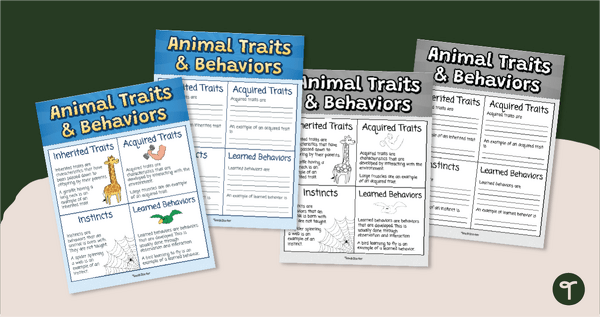
Animal Traits and Behaviors Anchor Charts
Help your students differentiate between inherited and acquired traits, instincts, and learned behaviors with a printable science anchor chart and note-taking organizer.
- Plus Plan
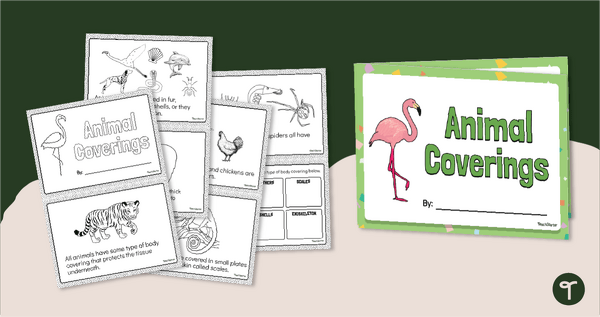
Animal Body Coverings Mini Book
Read and learn about the characteristics of animals with a printable Animal Body Coverings Mini Book.
- Plus Plan
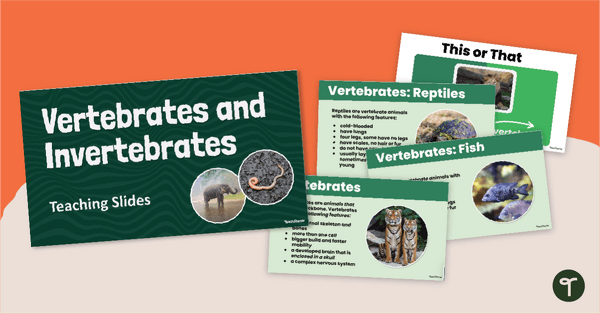
Vertebrates and Invertebrates Teaching Slides
Teach your students about the characteristics of vertebrates and invertebrates with an interactive teaching slide presentation.
- Plus Plan
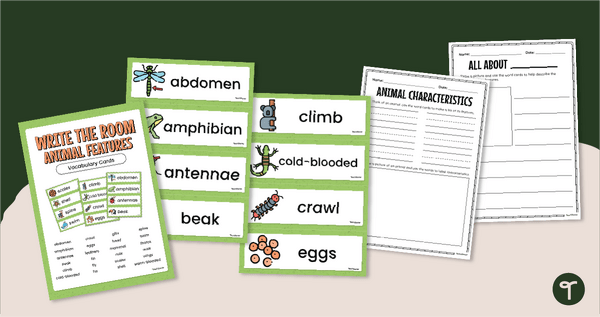
Animal Characteristics - Write the Room Activity
Help your young students read and write about features of animals with a printable Animal Characteristics Write the Room activity.
- Plus Plan
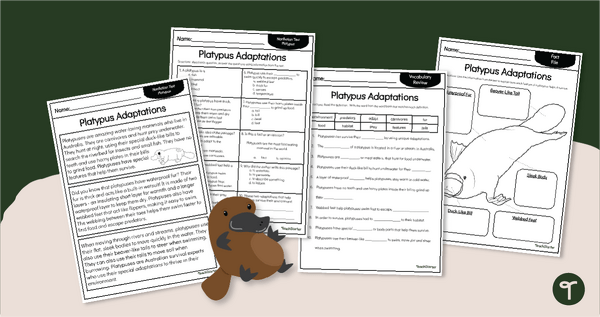
Platypus Adaptations - Reading Passage & Questions
Learn about the physical and behavioral adaptations of the platypus with a set of printable reading comprehension worksheets for 4th grade.
- Plus Plan
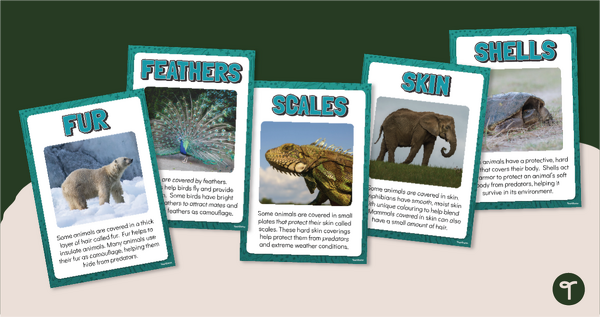
Animal Body Coverings Poster Set
Discover the different animal body coverings (feathers, fur, scales, skin and shells) with a set of printable posters.
- Plus Plan
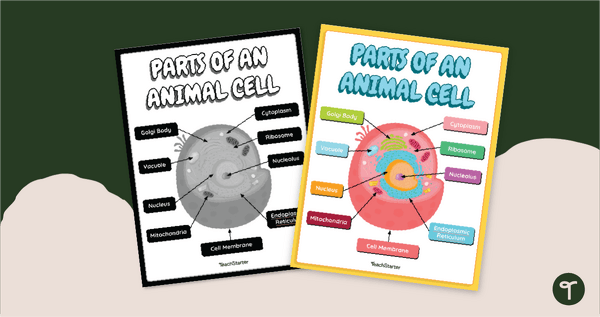
Labeled Animal Cell Model Poster
Highlight the different parts of an animal cell with a labeled animal cell diagram.
- Plus Plan
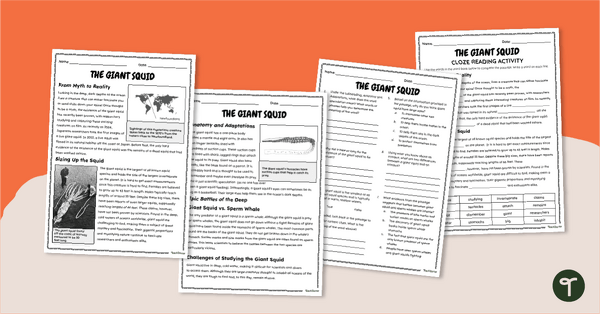
Giant Squid Reading Comprehension Worksheets - 5th Grade
Read and learn about the features and adaptations of the giant squid with reading comprehension worksheets for 5th grade.
- Plus Plan
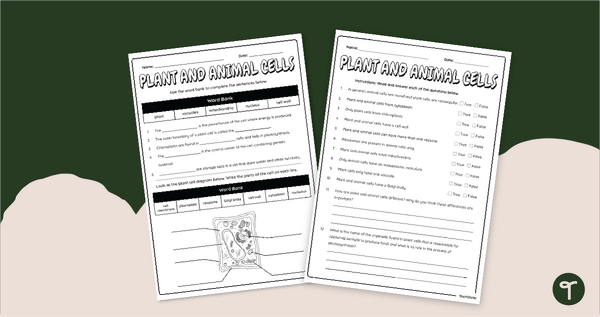
Plant & Animal Cells and Organelles Worksheet
Learn about the differences between plant cells and animal cells with a printable cells and organelles worksheet.
- Plus Plan

Types of Bird Feet and Bird Beaks - Adaptations Lesson Slides
Take a look at the types of bird beaks and feet that help our flying friends survive in different environments.
- Plus Plan
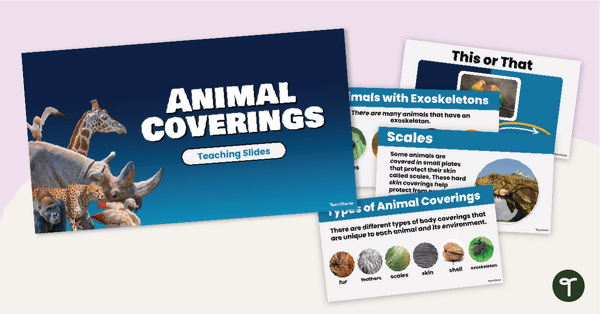
Animal Coverings Teaching Slides
Discover animals with scales, shells, fur, and other body coverings with an interactive teaching slide deck.
- Plus Plan
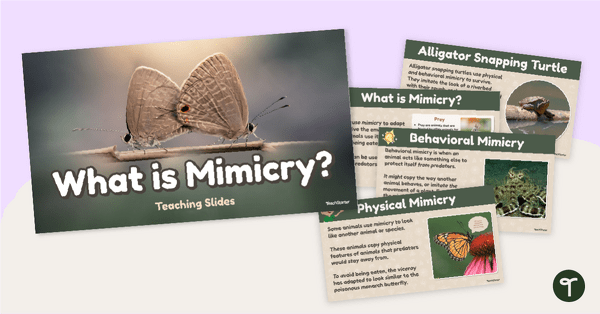
What is Mimicry? Teaching Slides
Help your students understand the purpose of mimicry and its variations with an engaging, interactive teaching slide deck.
- Plus Plan
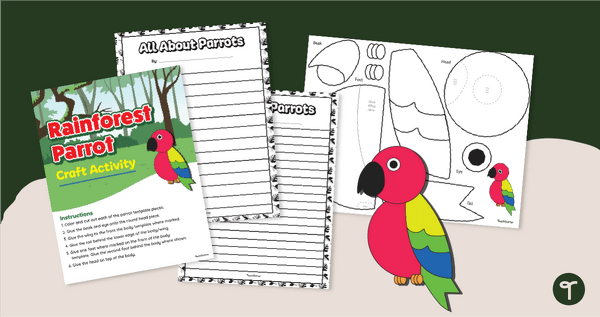
Rainforest Bird Craft & Writing Template
Pair a fun bird craft and informational writing to create a fun jungle-themed bulletin board.
- Plus Plan

Female, Male and Baby Animals Worksheet
Identify the names of female animals, male animals and their babies with an Animal Family Worksheet.
- Plus Plan
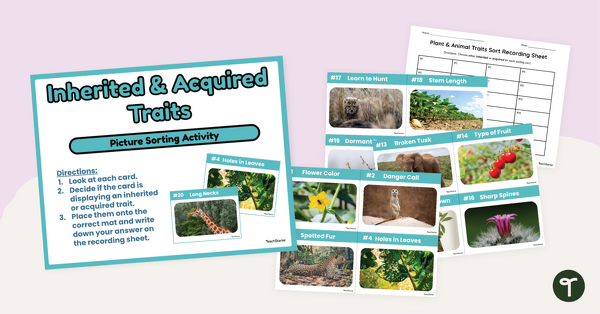
Acquired or Inherited? Trait Sort
Identify the differences between acquired and inherited traits with an engaging picture sort for 5th Grade.
- Plus Plan
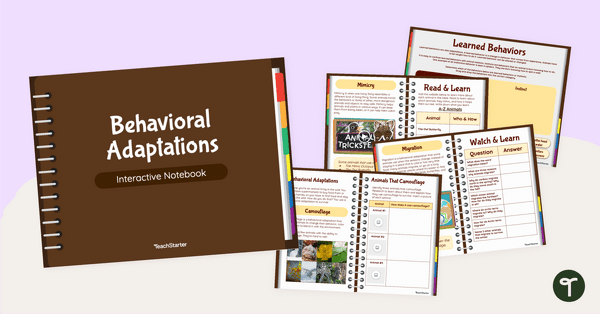
What Are Behavioral Adaptations? Digital Interactive Notebook
Discover behavioral adaptations of animals with an independent research-based Behavioral Adaptation Digital Learning Notebook.
- Plus Plan
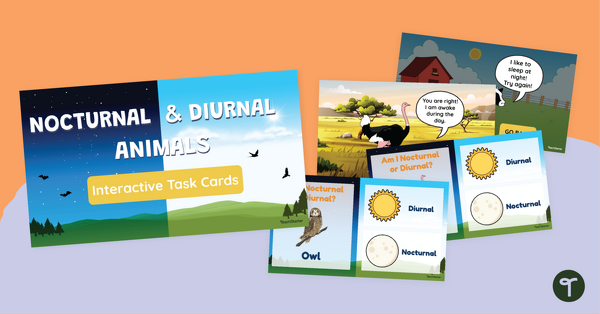
Nocturnal vs. Diurnal Animals Interactive Task Cards
Identify nocturnal and diurnal animals with an engaging, interactive task card game.
- Plus Plan
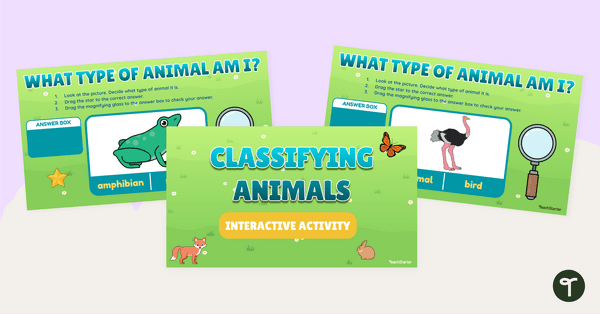
Classifying Animals Digital Learning Activity
Help students learn how to classify animals based on their characteristics with an engaging ‘Magic Looking Glass’ Interactive activity.
- Plus Plan
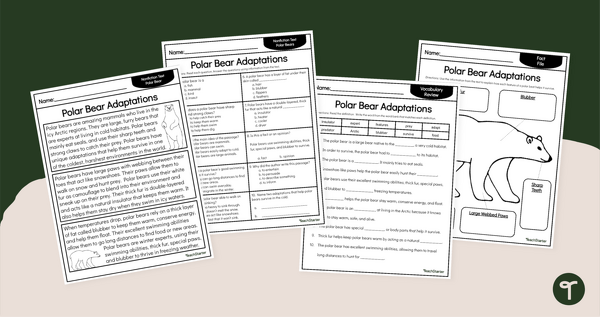
Polar Bear Adaptations Reading Comprehension Pack
Learn about the physical adaptations of the polar bear with a set of printable reading comprehension worksheets for 3rd grade.
- Plus Plan
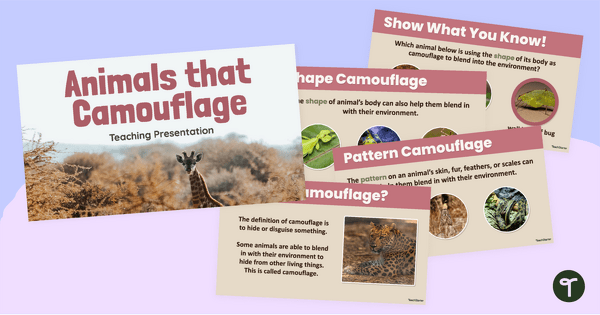
Animals that Camouflage Teaching Slides
Learn about animals that use camouflage to survive with an engaging Animals that Camouflage instructional slide deck.
- Plus Plan
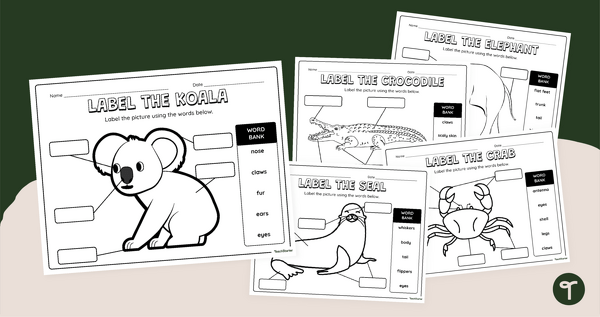
Parts of an Animal Body - Labeling Worksheets
Examine and identify animal body parts with printable ‘Label the Animal’ activities for preschoolers and kindergarteners.
- Free Plan
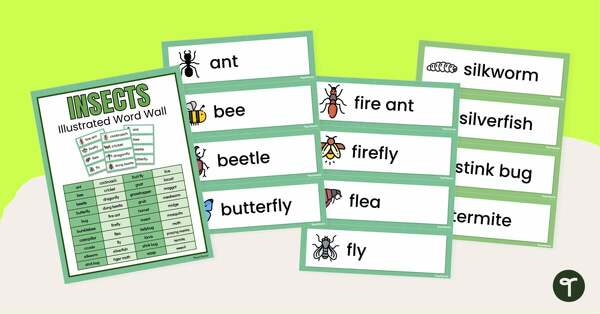
Insect Word Wall - Insect Names and Pictures
Use a printable insect word wall to introduce your students to the creepiest, crawliest creatures on the planet.
- Plus Plan
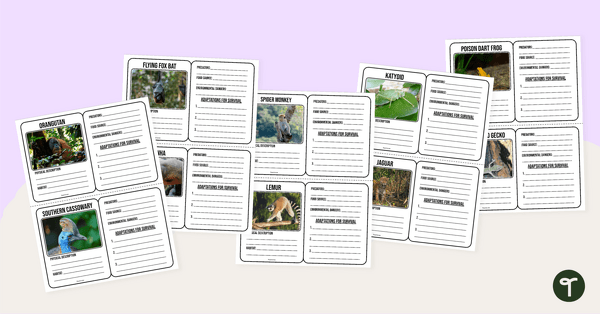
Tropical Rainforest Animal Adaptations Fact Template
Discover amazing rainforest animals’ adaptations and display your learning with miniature printable rainforest animal report templates.
- Plus Plan
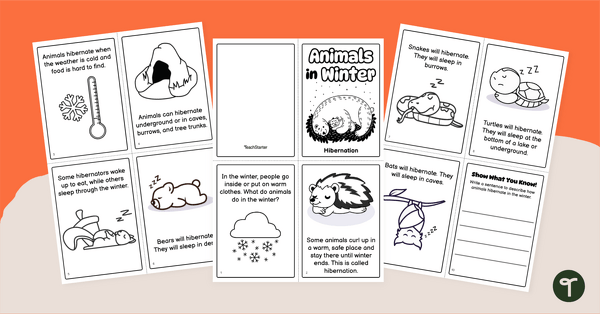
Animals in Winter - Hibernation Mini Book
Read and learn about animals that hibernate with a printable hibernation book for kids.
- Plus Plan
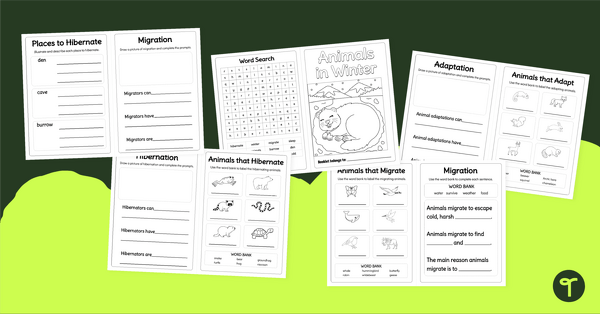
Animals in Winter Activity Book
Show what you know about hibernation and migration with a printable Animal Adaptations activity book.
- Plus Plan
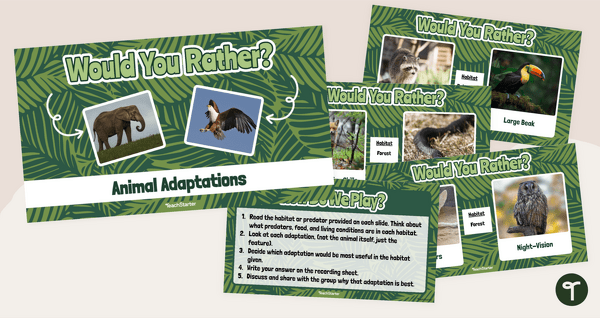
Would You Rather? Animal Adaptations Game
Discuss and debate the best animal adaptations with the Would You Rather? Animal Adaptation game.
- Plus Plan
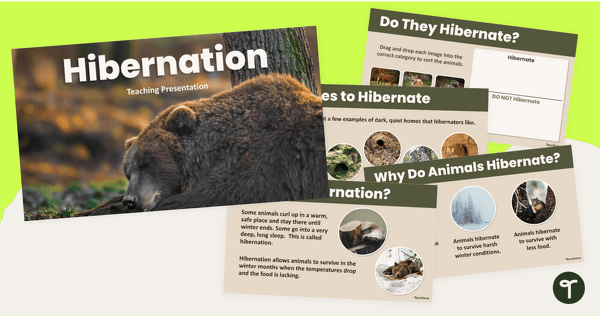
What Animals Hibernate? Teaching Slides
Discover which animals hibernate and how they survive the winter with an interactive teaching slide deck.
- Plus Plan
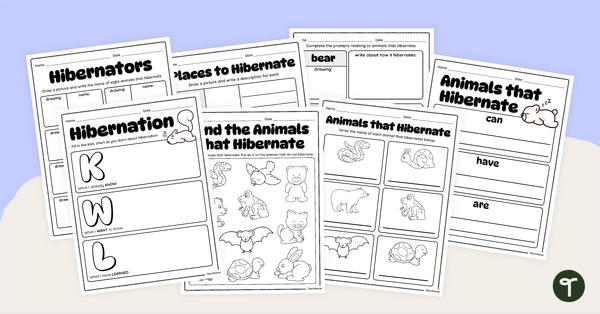
Animals and Hibernation Worksheet Pack
Help your students learn about animals that hibernate with a printable pack of worksheets about animals and hibernation.
- Plus Plan
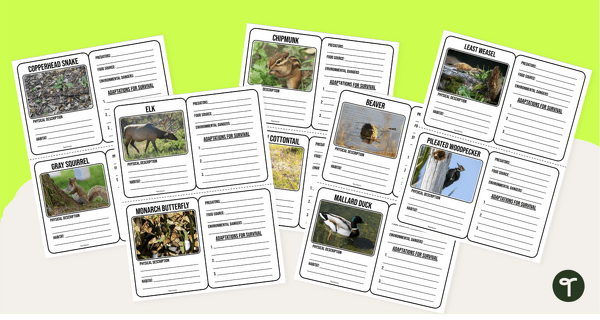
Forest Animal Adaptations Trading Cards
Discover the adaptations of animals in the forests and woodlands with printable animal trading card templates.
- Plus Plan
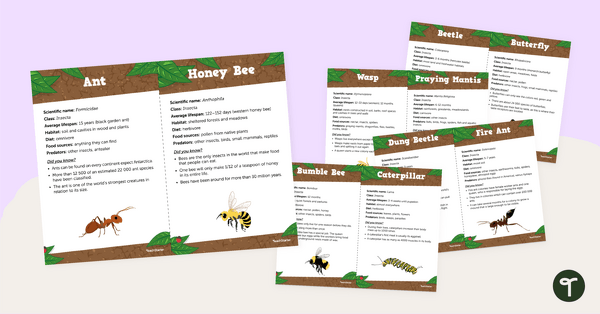
Types of Insects - Fact Cards
Discover facts and features related to a variety of insects with a handy set of insect fact cards.
- Plus Plan
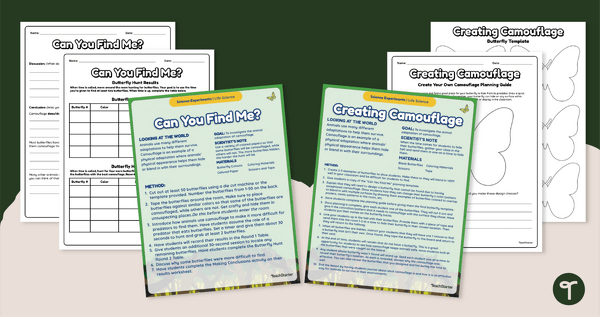
Butterfly Camouflage Activity Pack
Experience camouflage in butterflies and create an engaging scientific simulation with our printable butterfly camouflage activity pack.
- Plus Plan
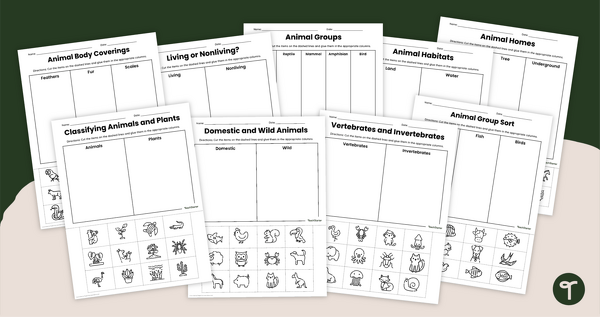
Animal Classification Worksheets for Kindergarten
Identify and sort animals according to their characteristics with a printable pack of kindergarten science worksheets.
- Animal Adaptations and Traits Worksheets
- Animal Adaptations and Traits Posters
- Animal Adaptations and Traits Games
- Animal Adaptations and Traits for Kindergarten
- Animal Adaptations and Traits for 1st Grade
- Animal Adaptations and Traits for 2nd Grade
- Animal Adaptations and Traits for 3rd Grade
- Animal Adaptations and Traits for 4th Grade
- Animal Adaptations and Traits for 5th Grade
- Animal Adaptations and Traits for 6th Grade